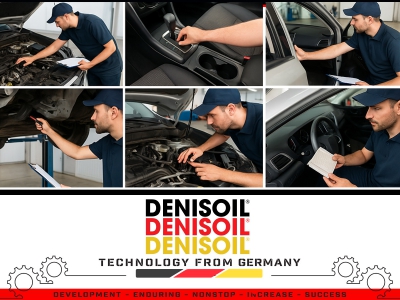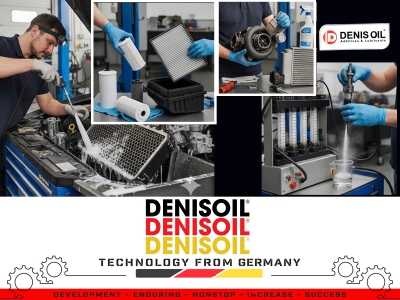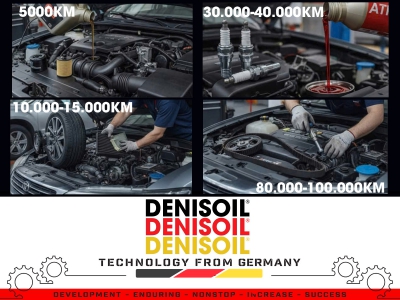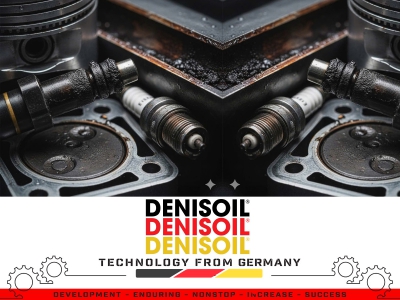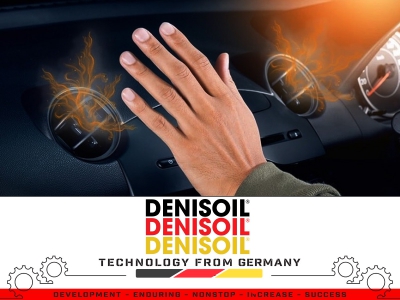Engine Temperature Warning Light (TEMP) Illuminated in Red
When the engine temperature warning light (thermometer icon or “TEMP” indicator) comes on in red, it indicates that the engine is overheating or the cooling system is malfunctioning.
If the vehicle continues to operate in this condition, it may cause cracked cylinder heads, blown head gaskets, seized pistons, or bent connecting rods.
COMMON TECHNICAL CAUSES
Abnormally High Coolant Temperature
Low coolant level:
- The coolant level in the radiator or expansion tank (reservoir) drops below the MIN mark.
- Possible causes include leakage from the radiator, hoses, water pump, or head gasket failure.
- Symptom: traces of colored coolant (green, pink, or red) visible under the vehicle.
Defective radiator cap:
- The pressure valve in the cap (normally ~1.1–1.3 bar) fails to maintain pressure → coolant boils prematurely and overflows.
Cooling System Not Operating Properly
Radiator fan not running:
- Causes: burned-out fan motor, faulty relay, blown fuse, or defective ECT sensor that fails to activate the fan.
- Check: if coolant temperature rises to about 90–95 °C but the fan does not start → suspect a relay or sensor fault.
Clogged or dirty radiator:
- Scale deposits from tap water or old antifreeze block coolant flow in the tubes.
- Reduces heat transfer efficiency → system should be flushed periodically using a proper radiator cleaner.
Thermostat stuck closed:
- When stuck, coolant cannot circulate between engine and radiator → temperature rises rapidly.
- Symptom: upper radiator hose is hot while the lower hose remains cold.
Sensor or Electrical Faults
Faulty ECT (Engine Coolant Temperature) sensor:
- Sends incorrect signals to the ECU → warning light turns on falsely, or the ECU fails to trigger the cooling fan.
- Check using an OBD-II scan tool; normal output voltage range is 0.3–4.8 V.
Loose, corroded, or broken wiring/connectors:
- Often occurs after repair work, water ingress, or rodent damage.
Other Engine-Related Causes
Insufficient or degraded engine oil:
- Old, thickened, or low oil levels reduce lubrication and increase internal friction → excessive heat generation.
- Check oil level with the dipstick; if below MIN, add oil of the correct SAE/API grade as recommended.
Excessive load or mechanical drag:
- Overloaded vehicle, prolonged hill climbing, or sticking brake calipers/pistons can produce excess heat.
EMERGENCY ACTIONS WHEN THE RED LIGHT COMES ON
Step 1: Stop the vehicle safely
- Pull over to a safe spot, turn off the A/C, shift to neutral (N) or park (P), and let the engine idle for 1–2 minutes to dissipate heat.
- If the light remains on → shut off the engine immediately to prevent seizure.
Step 2: Do not open the radiator cap while hot
- Pressure inside the system can reach 1 bar (~100 kPa); opening it may release boiling coolant (~100 °C) and cause burns.
- Wait 15–30 minutes until the engine cools down completely. Touch the radiator; if it’s cool, open the cap slowly with a thick cloth.
Step 3: Perform basic checks
- Coolant level: if low, top up with proper coolant (ethylene-glycol based), not plain tap water.
- Radiator fan: switch ignition ON (engine off) and observe if the fan activates.
- Leaks: inspect for vapor, dripping coolant, or stains near hoses, radiator, or pump.
TECHNICAL MAINTENANCE RECOMMENDATIONS
|
Item
|
Inspection Interval
|
Technical Note
|
|
Coolant level
|
Every 10,000 – 20,000 km
|
Check color clarity (no rust or cloudiness)
|
|
Coolant replacement
|
Every 40,000 – 50,000 km
|
Use 50% ethylene-glycol premix with de-ionized water
|
|
Thermostat
|
Every 2 years
|
Should open at 80 – 90 °C
|
|
Radiator cap
|
Every 1 year
|
Ensure pressure holding 1.1 – 1.3 bar
|
|
Fan and relays
|
Each service interval
|
Check operating voltage and current draw
|
|
Radiator cleaning
|
Every 1 year
|
Use non-corrosive aluminum-safe cleaner
|
QUICK SUMMARY FOR DRIVERS
Red temperature light ON = STOP IMMEDIATELY.
- Do not keep driving.
- Wait for the engine to cool down, then check coolant, fan, and leaks.
- If the cause is unclear → bring the vehicle to a workshop to inspect the thermostat, ECT sensor, water pump, and fan circuit.
 Tiếng Việt
Tiếng Việt
 Chinese
Chinese
 English
English



